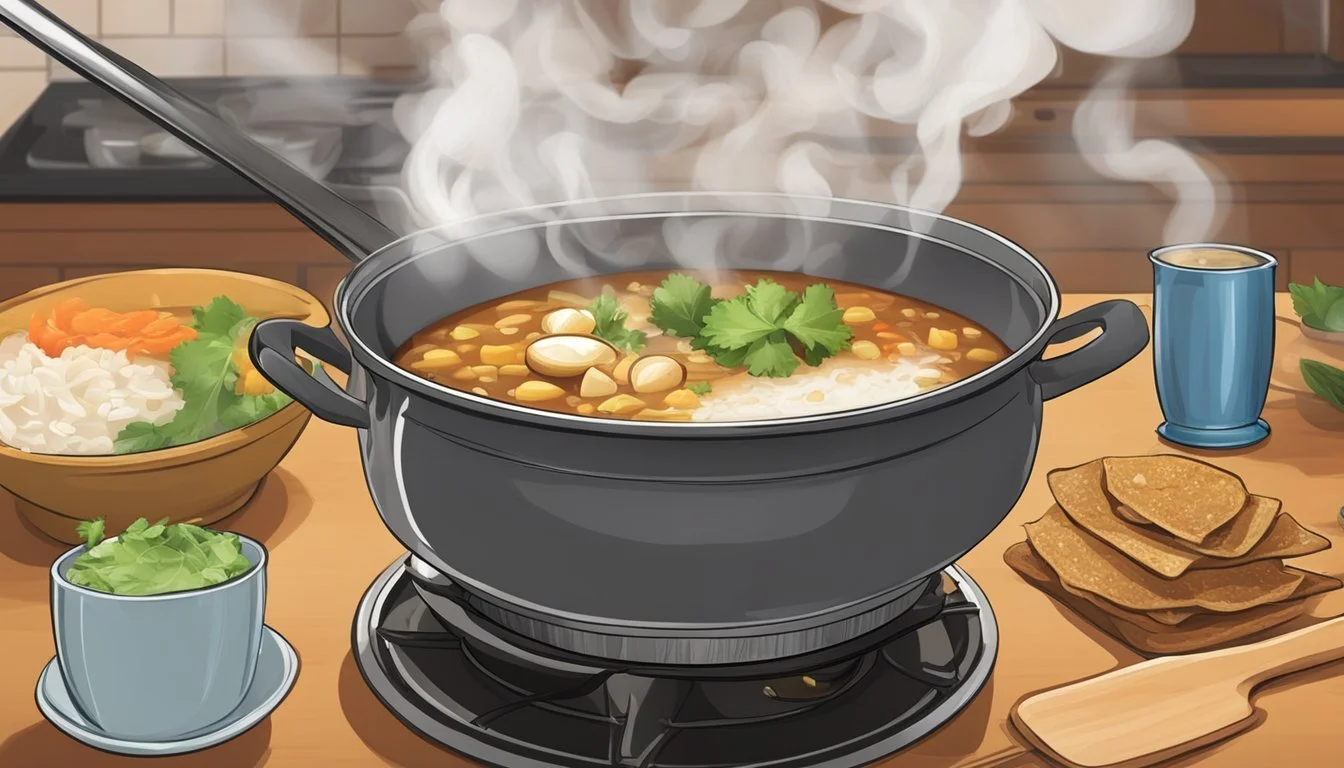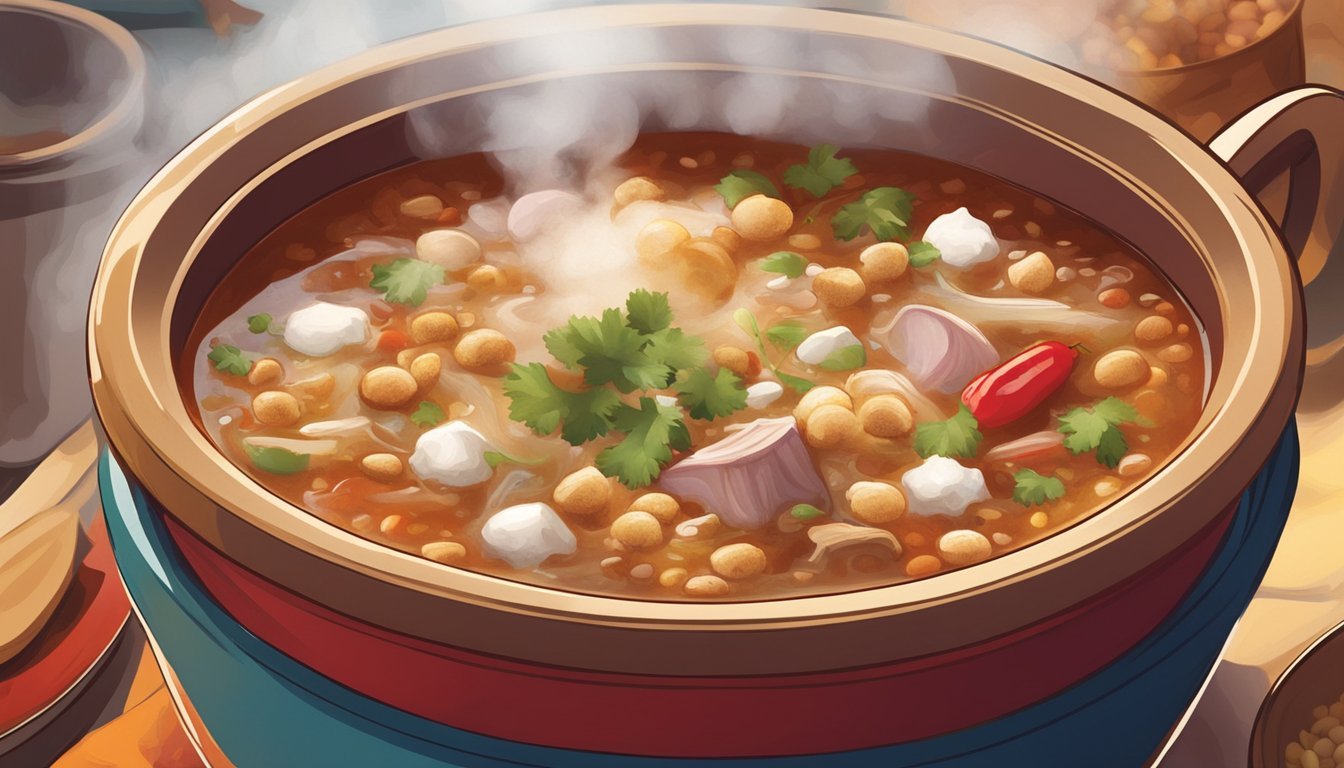Best Way to Reheat Pozole
Ensuring Flavorful Warmth in Every Bowl
Pozole holds a cherished place in traditional Mexican cuisine, often served during special occasions and known for its rich, hearty flavor. This authentic Mexican soup, brimming with hominy, meat, and a blend of spices, delivers a deeply satisfying experience when prepared and reheated correctly. The challenge many face after enjoying a festive meal is maintaining the pozoles' integrity and taste during the reheating process, ensuring the second serving is as enjoyable as the first.
Proper reheating methods can make a significant difference in preserving the soup's robust essence. Heat should be distributed evenly throughout the pozole, avoiding overheating which can diminish its vibrant flavors and tender textures. Using the correct technique ensures that this Mexican delicacy retains its soul-warming qualities, even after being stored in the refrigerator or freezer.
It's essential to approach the reheating of pozole with a gentle touch. Short intervals in the microwave with careful stirring, or a low and slow approach on the stove, can protect the soup's delicate components from turning tough or mushy. Preserving the culinary integrity of pozole during reheating pays homage to the tradition and care that went into its creation, presenting a dish that is both comforting and celebratory with every reheated bowl.
Understanding Pozole
Pozole is an authentic Mexican soup that combines rich flavors with deep historical roots. Often associated with holiday celebrations, this traditional dish features hominy as its staple, with various meats and spices contributing to its distinct taste.
Historical Significance
Pozole's lineage can be traced back to the Aztec civilization, when it was a part of ritual offerings. The process of nixtamalization was used to prepare the maize, which is a key step in creating the hominy central to this dish. Originally, pozole was associated with special occasions, underscoring its importance in Mexican culture.
Key Ingredients
The foundation of pozole is hominy, which is field maize that has undergone nixtamalization to soften it and make it more palatable. The main protein traditionally used is pork, but variations with chicken are common as well. Integral to the flavor profile are spices such as oregano and garlic, which add depth and richness to the soup.
Varieties of Pozole
There are three primary types, each known for their distinctive color and flavor profile:
Pozole Rojo (Red Pozole): Highlighted by the use of red chiles such as ancho and guajillo.
Pozole Verde (Green Pozole): Gets its color from green chiles and other green ingredients like tomatillos and cilantro.
Pozole Blanco (White Pozole): The simplest form, often served plain with a variety of condiments on the side.
Each variety is steeped in tradition and carries the essence of Mexican cuisine, offering a hearty source of fiber and a mosaic of flavors.
Preserving Pozole's Freshness
To maintain the authentic taste and quality of pozole, proper storage techniques are essential. These methods help prevent spoilage, protect against freezer burn, and retain the rich flavors of the hominy and meat within the dish.
Properly Storing Pozole
When storing pozole, it is vital to allow the soup to cool to room temperature before placing it in storage. Airtight containers are recommended for keeping pozole fresh. Dividing the pozole into smaller portions can facilitate quicker cooling and more accessible reheating. Ensure that the containers are sealed tightly to prevent exposure to air which can hasten spoilage.
Freezing Best Practices
Freezing pozole is an effective way to extend its shelf life and reduce food waste. To freeze pozole:
Allow the soup to cool completely.
Ladle the pozole into freezer-safe bags or containers, leaving some room for expansion.
Seal the packaging properly, eliminating as much air as possible.
Label each container with the date to keep track of how long the pozole has been stored.
Store the containers in the freezer, ensuring they are placed in a way that prevents them from tipping and spilling.
By following these steps, one can preserve the quality of the pozole for future meals.
Defrosting Techniques
To enjoy the best quality of frozen pozole, one should plan for a gradual thawing process. Transfer the pozole from the freezer to the fridge, allowing approximately 24 hours for it to thaw completely. This slow thawing technique helps in maintaining the texture and flavor integrity of the ingredients in the pozole, such as hominy and meat. Quick defrosting methods can cause uneven thawing and may compromise the taste and safety of the dish.
Selecting Reheating Methods
When reheating pozole, preserving its rich flavors and textures is essential. One's choice of method depends on convenience, available equipment, and how much they are reheating.
Stovetop Reheating
Reheating pozole on the stovetop is optimal for uniform heating. They should use a Dutch oven or a heavy pot and pour the pozole in. Heat should commence on a low setting, and then be gradually increased to prevent the soup from sticking to the bottom. During this process, stirring occasionally facilitates even heat distribution. If the pozole is dense, one might add a bit of broth or water to adjust consistency. Always cover the pot to retain moisture and flavor.
Microwave Reheating
For a quick alternative, the microwave can be used. One should transfer the pozole into a microwave-safe container, possibly with a vented lid or plastic wrap poked with holes to allow steam to escape. When using the microwave, short bursts of power, such as one-minute intervals, are recommended, stirring in between to promote even reheating.
Using a Slow Cooker or Crockpot
A slow cooker or crockpot provides a gentle reheating method for pozole, which can be particularly useful for larger quantities that would be cumbersome on the stovetop. The pozole should be placed in the crockpot and set to a low heat, allowing it to warm slowly, usually over a period of a few hours. Stirring is not frequently necessary due to the slow, indirect heat but checking occasionally is advisable. This method also enables the flavors to meld even further, enhancing the dish's taste.
Maintaining the Essence of Pozole
When reheating pozole, the objective is to preserve its rich and hearty flavor. It's key to reheat gently to maintain the integrity of the broth and the tenderness of the pork meat.
Reheating Without Losing Flavor
Broth: Reheat the pozole on low heat to avoid the broth from reducing too much, which could alter the flavor.
Pork meat: Shredded pork shoulder should remain juicy and tender. Warm it within the broth to absorb flavors.
Spices: Reheating should help reinvigorate the taste of garlic, Mexican oregano, and other spices, rather than degrade them.
Key Factors:
Heat gently and gradually.
Stir occasionally to distribute heat evenly.
Never allow the pozole to reach a rolling boil.
Avoiding Common Reheating Mistakes
Direct Heating: Applying too much heat too quickly can dry out the pork and cause spices to lose their nuance.
Microwave: If a microwave is used, cover and heat in short intervals, stirring in between to avoid hot spots.
Additions: If the broth has reduced, add a touch of water; it should be hot but not boiling, mixed with a bit of chicken bouillon to maintain the rich flavor profile. Freshen up the dish with a squeeze of lime juice just before serving.
Enhancing Pozole After Reheating
Reheated pozole can be elevated with the right garnishes and sides to enhance its flavors and textures. Incorporating a variety of fresh toppings and traditional sides not only restores the freshness but also complements the rich and hearty character of the dish.
Refreshing with Garnishes
Garnishes play a crucial role in reintroducing freshness and zing to pozole after it has been reheated. They should be prepared just before serving to maintain their crispness and vibrant flavor. Here's a list of ideal garnishes to refresh your pozole:
Cabbage: Fresh, shredded cabbage adds a delightful crunch.
Radishes: Thinly sliced radish brings a peppery bite.
Onions: Finely diced onion offers sharpness and texture.
Cilantro: Chopped cilantro infuses a bright, herby aroma.
Lime: A squeeze of lime juice from fresh lime wedges enhances with a tangy accent.
One can arrange these garnishes in small bowls on the table, allowing diners to personalize their bowl of pozole to their liking.
Adding Complementary Sides
To further enrich the experience, serve pozole with sides that complement its heartiness:
Tortillas/Tostadas: Warm tortillas or tostadas provide a satisfying crunch and are ideal for scooping.
Chips: A side of chips complements the soup and can be used to add texture.
Sauce: A dab of hot sauce or salsa verde can be offered for those who enjoy a spicier kick.
Providing an assortment of sides not only adds depth to the meal but also adheres to traditional ways of serving pozole, making the dining experience authentic and enjoyable.
Serving Suggestions
When serving pozole, a rich and hearty Mexican stew (What wine goes well with stews?), it is crucial to pair it with the right accompaniments to enhance its flavors. Making the correct selections for pairings and understanding how to integrate pozole into special occasions can transform a simple meal into a memorable feast.
Pairings to Elevate the Dish
Pozole's bold flavors are best complemented by traditional Mexican side dishes that can stand up to its richness. Here are some ideal pairings:
Tacos: Soft tacos filled with simple ingredients like fresh cilantro, minced onion, and a squeeze of lime highlight the stew's complex flavor.
Tostadas: Crispy tostadas provide a contrasting texture to the soup and can be topped with lettuce, cheese, and a dollop of crema.
Enchiladas: Serving enchiladas on the side offers a satisfying blend of corn, cheese, and chili, which harmonizes with the stew.
One could also consider lighter sides such as a zesty lime-cabbage slaw or freshly baked cornbread. These sides can provide a balance, cutting through the hearty richness of the pozole.
Pozole in Special Occasions
Pozole is often a centerpiece at special occasions, highlighting the importance of Mexican culinary traditions. On such events, presentation and accompaniments are key.
Make-ahead options: For ease during special events, prepare pozole a day in advance as this allows the flavors to meld together and intensify.
Serving: Present the pozole in a large, traditional clay pot if available, accompanied by individual bowls for guests to serve themselves.
Special occasion pairings: Enhance a festive table with a variety of garnishes such as radishes, avocado slices, diced onions, oregano, and wedges of lime.
Incorporating pozole into holiday feasts or family gatherings not only provides a comforting meal but also pays homage to its cultural significance.








